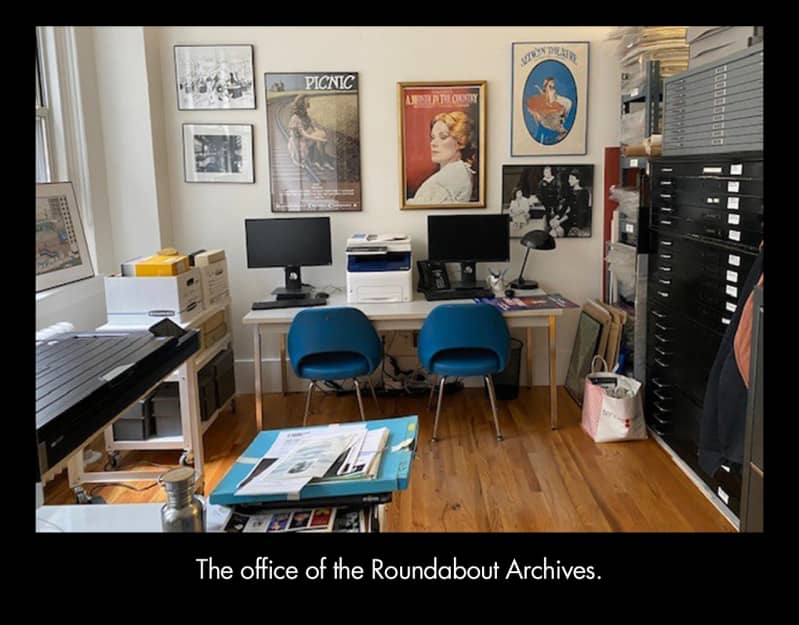Jump to:
“Archivists” are imagined to do quiet, solo work in cold, dusty rooms filled with books. While this may sometimes prove true, the work of an archivist is varied and valued across industries. Archivists work anywhere that it is necessary to retain records for people or organizations, such as universities, hospitals, museums, large corporations, and even theatre companies.
Archivists work with media of all sorts — photographs, financial records, letters, video, and more— to create a detailed picture of how things get done and why, both for people within the institution and for scholars. Archivists bear witness, work to strengthen collective memory, and provide transparency for anyone interested in learning the how and why of an institution’s functioning.
An archivist processes, arranges, and contextualizes the data found in collections, and it is her role to both provide access to and protect this material. When a new object or document is sent to an archive, the archivist must document its arrival, determine its value, and categorize it within the systems she has in place.
One tool that helps archivists keep track of their collection is a “finding aid,” an inventory that explains the contents of each box or folder, so that researchers can understand what a collection contains and how to access each item. This work happens through both analog and digital technology. In large archives, some archivists’ entire jobs are to organize metadata, assigning virtual tags so that content can be found efficiently on search engines.
This type of work sounds similar, of course, to the work of a librarian, but there are a number of key differences. An archivist has a more “behind-the-scenes” role and has less interaction with patrons. Rather than working with published books and media, archivists work with records that are usually unpublished.
Archivists often work closely with curators, whose job it is to select and display content that the archivist has processed, arranged, and described. The curator’s job is to provide a collection with historical context, as well as context about similar collections.
Typically, an archivist needs both an undergraduate and a graduate degree. While aspiring archivists can study a number of disciplines in their undergraduate years, their graduate degrees are usually in history, library sciences, or both.
A Masters of Library and Information Science (MLIS) is the two-year degree required for most archivist jobs. In this course of study, archivists learn everything from basic archival theory, cataloging, ethics, data science and analytics, to research methods. While this is the typical path to becoming an archivist, sometimes cultural workers choose to become archivists without formal training, recognizing the value of the artifacts they have on hand and figuring out how to create a system to share them with others.
In 2008, the Leon Levy Foundation generously provided Roundabout with dedicated funding to start the Archives, with the initial goal of creating a three-year project building up to Roundabout’s 50th anniversary. Roundabout archivist Tiffany Nixon knew immediately that she wanted to give the archives staying power. Now in its 14th year, the Roundabout Archives hosts researchers who come to watch archival footage of many of our productions, or view original costume pieces and props.
The fact that the Roundabout Archives exists at all makes them significant — it is rare for an American non-profit theatre company to have the spatial or financial resources to maintain their own collection. Usually, performing arts companies end up donating their collections to a university or library, where the collection is highly “weeded,” or downsized.
Tiffany Nixon describes how “many theatre companies only keep playbills, flyers, and sometimes photographs, but they aren’t thinking about providing an entrance into the behind-the-scenes making of the show.” Providing this access is what excites her about working in an archive. In the future, Nixon is excited about further connecting the work she does in the archives with the dramaturgical work that goes on for each production. The term “embedded archivist” in theatre refers to someone who is involved throughout the whole process, from the writing all the way through to production. Nixon believes that the work of embedded archivists will lead the next wave of theatre studies.
Outside of Roundabout, the American Theatre Archive Project (ATAP) was created in 2009 to help theatre companies create and maintain their archives in their own space, or in a library or university setting. The Society of American Archivists provides further resources for Performing Arts Archivists, which could be useful to anyone interested in deepening their understanding of this expanding field.
Learn more about some of the objects held in the Roundabout Archives.
References
|
“Archivist vs. Librarian: Which Career Path Is for You?” Maryville Online, 11 Aug. 2020. Heacock, Annabel, and Tiffany Nixon. “Roundabout Archives Interview.” 26 July 2022. “History.” American Theatre Archive Project, 5 Apr. 2022. “So You Want to Be an Archivist.” Society of American Archivists, 22 Jan. 2018. |



